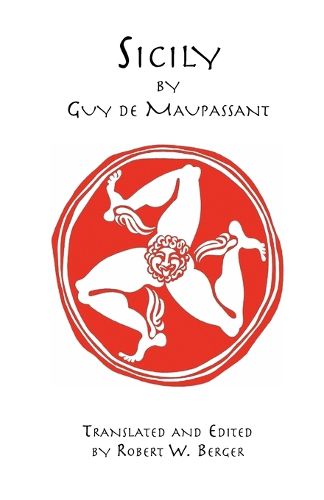Readings Newsletter
Become a Readings Member to make your shopping experience even easier.
Sign in or sign up for free!
You’re not far away from qualifying for FREE standard shipping within Australia
You’ve qualified for FREE standard shipping within Australia
The cart is loading…






This title is printed to order. This book may have been self-published. If so, we cannot guarantee the quality of the content. In the main most books will have gone through the editing process however some may not. We therefore suggest that you be aware of this before ordering this book. If in doubt check either the author or publisher’s details as we are unable to accept any returns unless they are faulty. Please contact us if you have any questions.
GUY DE MAUPASSANT, the master of the nineteenth-century French short story, visited Sicily in the spring of 1885 and wrote his travel memoir as a tribute to the art, architecture, people and landscape of this Mediterranean island. He provides a vivid account of this strange and divine museum of architecture, where Greek, Roman, Byzantine, Arab, and Norman influences combine to produce monuments of beauty and a unique Sicilian style. In a land then little touched by modern transportation, with and without guides, he traveled by train, boat, horse and foot to reach the places he had set out to see: Palermo and the great cathedral of Monreale; the ancient Greek sites of Segesta, Selinunte and Agrigento; Messina and the Aeolian Islands; Catania, Taormina, Syracuse. Maupassant climbs to the top of Vulcano, Mount Etna, and the fortified monastery on Monte Cuccio, and down into the Capuchin catacombs in Palermo and the sulphur mines of Casteltermini. He visits many places that had special aesthetic and poetic importance for him, like the Archaeological Museum of Syracuse and its famous statue of Venus and in Palermo both the Palatine Chapel and Wagner’s room in the Hotel des Palmes where the composer wrote the final notes of his last opera, Parsifal. Sicily is edited and translated by Robert W. Berger, an art historian who has published extensively on French art and architecture and on the history of Paris. Introduction, notes, bibliography, map. 25 engravings and photographs. Historical Travel, Paperback.
$9.00 standard shipping within Australia
FREE standard shipping within Australia for orders over $100.00
Express & International shipping calculated at checkout
This title is printed to order. This book may have been self-published. If so, we cannot guarantee the quality of the content. In the main most books will have gone through the editing process however some may not. We therefore suggest that you be aware of this before ordering this book. If in doubt check either the author or publisher’s details as we are unable to accept any returns unless they are faulty. Please contact us if you have any questions.
GUY DE MAUPASSANT, the master of the nineteenth-century French short story, visited Sicily in the spring of 1885 and wrote his travel memoir as a tribute to the art, architecture, people and landscape of this Mediterranean island. He provides a vivid account of this strange and divine museum of architecture, where Greek, Roman, Byzantine, Arab, and Norman influences combine to produce monuments of beauty and a unique Sicilian style. In a land then little touched by modern transportation, with and without guides, he traveled by train, boat, horse and foot to reach the places he had set out to see: Palermo and the great cathedral of Monreale; the ancient Greek sites of Segesta, Selinunte and Agrigento; Messina and the Aeolian Islands; Catania, Taormina, Syracuse. Maupassant climbs to the top of Vulcano, Mount Etna, and the fortified monastery on Monte Cuccio, and down into the Capuchin catacombs in Palermo and the sulphur mines of Casteltermini. He visits many places that had special aesthetic and poetic importance for him, like the Archaeological Museum of Syracuse and its famous statue of Venus and in Palermo both the Palatine Chapel and Wagner’s room in the Hotel des Palmes where the composer wrote the final notes of his last opera, Parsifal. Sicily is edited and translated by Robert W. Berger, an art historian who has published extensively on French art and architecture and on the history of Paris. Introduction, notes, bibliography, map. 25 engravings and photographs. Historical Travel, Paperback.